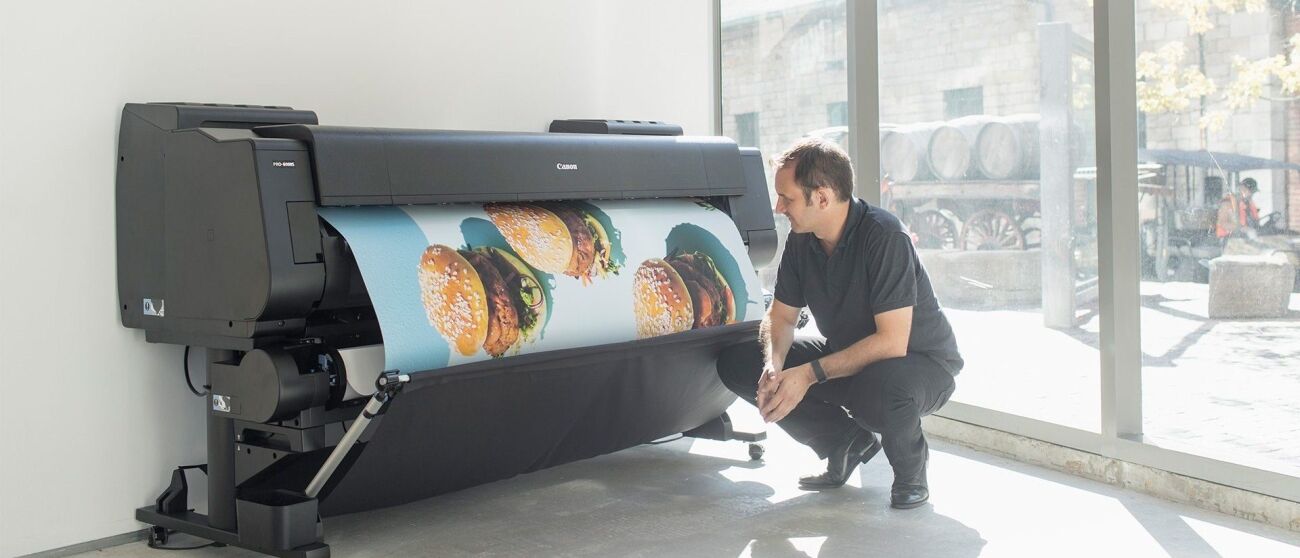How to Maximize Quality In Wide-Format Printing
3 min read

Many businesses looking to get into wide-format printing have questions about how the format works. In this article, we use our decades of knowledge to discuss how to maximize wide-format print quality.
The More Inks, The Better The Color?
Paper quality does matter because of the coating. If you get cheap paper and use really good ink on top of it, it’s still going to look like cheap paper. So you need to have a good combination of a quality printer with good ink and quality material as well. Some vendors offer quality choices in tiers. They may say to customers, “You want a banner? I’ll give it to you for $10. If you want a better banner, I’ll give it to you for $30.” You have choices about different qualities.
Impact of Engine Compared to Impact of Paper Choice
When it comes to wide-format output quality, what percentage is driven by the engine of the device and what percentage depends on the paper, in terms of print quality?
We’d say 70/30 favoring the printer side, because most manufacturers make media to the same specs. You can get some down-and-dirty cheap materials, but you’re not going to want to print a photograph on that. It’s all relative to the project.
If you get 170 GSM glossy photo paper from Canon, or 170 GSM glossy photo from HP, they’re going to be pretty close in terms of specs and how much coating they have, despite any price difference. Either way, you need pretty decent media, but the way that the printer prints, how it lays down ink, and how much it lays down — all make a big difference.
You want to print the best quality print for the least amount of ink, right? That’s why manufacturers look at print heads, because they’re trying to compete with each other to provide better quality at a lower usage. They know that is where the competition is at.
How the Wrong Ink Affects Output Quality
The direct answer is that if you use the wrong device or ink for your project, then you are headed for disaster. We had a petroleum company in Biloxi that described putting putting everything from their wide-format printing projects inside their stores and gas stations.
We asked if any of the prints were going to be outside exposed to the elements, and we were told no. All of the prints were for inside use. Understanding their needs, we sold them one of the Canons for marketing and POP signage.
Unfortunately, the client came back to us about three months later and said all their signage was distorted, and the inks were tearing up the media. We asked what exactly they were doing with the finished media and found out they were putting them in their windows. This means that an indoor printer with non-UV ink was being used for items exposed to direct sunlight and temperature changes.
They didn’t need an indoor-type printer with short-term ink and media durability. What they needed was outdoor ink, ie. UV ink, and longer lasting media to stand up against the elements and environment that the signage was used in. These are the subtle things a sales professional should be asking. In this case, we had to fix the issue, but these are the kind of mistakes a common rep will make if they are not trained in the technology and are just selling a wide-format printer.
Another example would be car wraps. These should always be done with outside materials and ink. If something is to be exposed to direct sunlight or temperature changes, it needs outside materials.
Trust the Wide-Format Experts at Novatech
As you can see, there are many factors when deciding on large-format printing. There is the printer, ink, types of materials, where your prints will end up, etc. At Novatech, we provide not only many different models and ink options, we also have specialists in all of our markets to guide you through the decision-making process.
One of the goals of Novatech is to educate our clients, so they can make informed decisions about wide-format options. If you would like to learn more about our line of products, give us a call.


